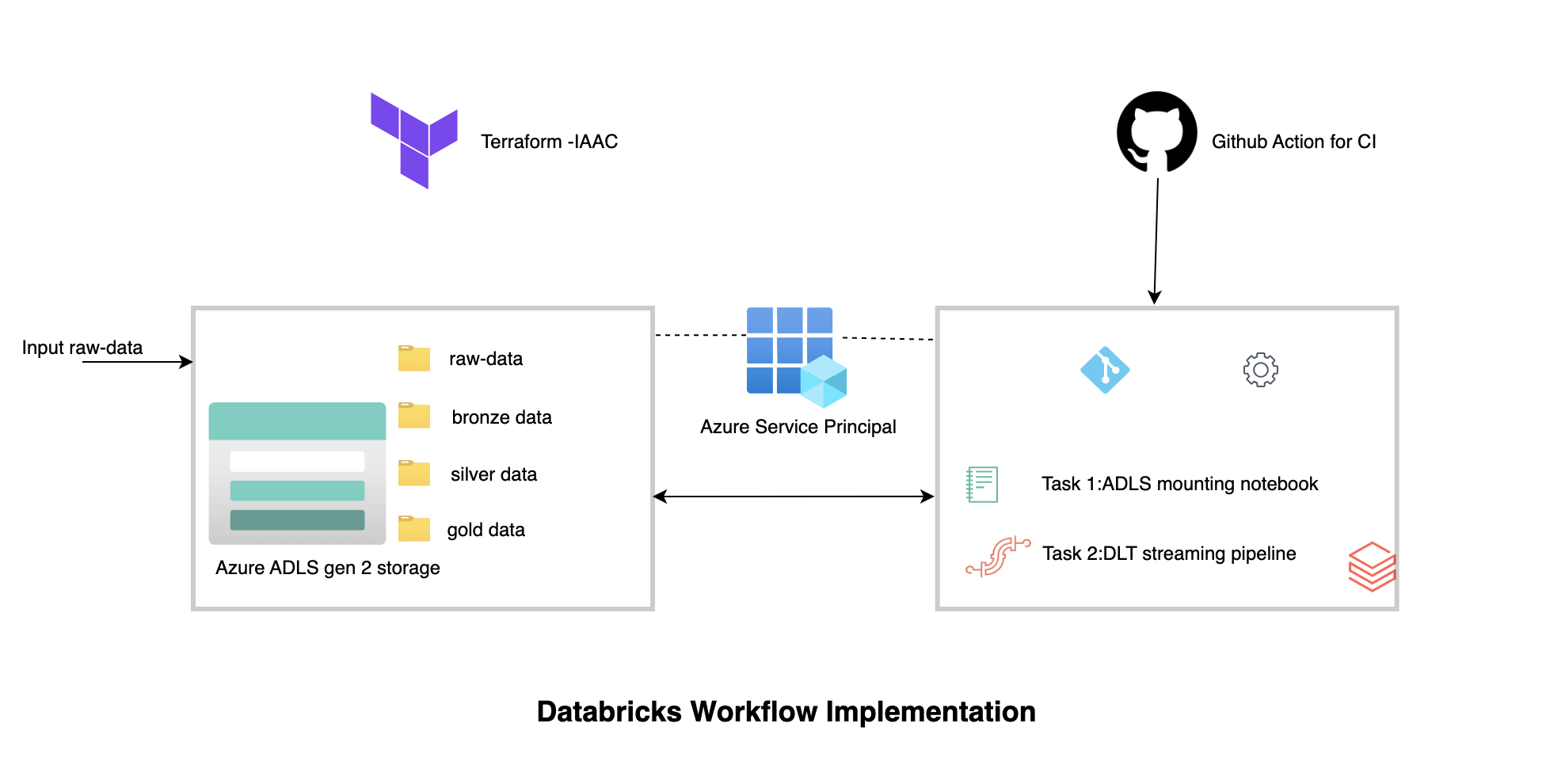The project implements the ETL transformation of raw data (CSV) into refined data. It uses the medallion architecture, which accesses streaming source data from the raw_data folder and loads it into the bronze_layer in parquet format. This data is then processed into the silver and gold layers. The transformation is done using Databricks Delta Live Tables (DLT). In fact, DLT is used in the Databricks pipeline, which is Task 2 of the Databricks Job, while Task 1 is to mount the raw data source. This project also includes notebooks integration using Github actions. Databricks uses Azure app as service principle to mount your azure storage and write the files inside those folders
- Make sure you have
azure cliinstalled and configured andterraforminstalled. Terraform deploys the infrastructure via azure cli authentication. - clone this repo
git clone https://github.com/sangamdeuja/dbstreamingETL.git - Create Azure
databricks workspaceusing azure portal - Install and configure
databricks cli. Terraform will use databricks cli config for your default workspace. - Export environment variables for your subscription, for mac or Linux based architecuture. Replace the value in below code.
export TF_VAR_subscription_id=your_subscription_id - If you have some experience setting up terraform variable and you don't want to use explicitly in code, feel free to do so. In my case, I have defaulted the storage account name in
var.tfand containers, and folders name are hardcoded instorage.tf. If you don't have knowledge about terraform atleast change the storage account name to be unique. - Modify the path of the repo in
databricks.tfand also modify thequartz_cron_expressionand push the code in your github. - To enable Continuos Integration, go to your repo, settings, Secrets and variables, actions and create two repository secret
DATABRICKS_HOSTandDATABRICKS_TOKEN. Provide the databricks workspace url and databricks token as values to those secrets. - Deploy the the infrastructure using terraform commands inside your local repo.
terraform validate terraform plan terraform apply - Upload the csv files from raw-data folder to your raw_data folder in azure using cli or using azure portal.
- Go to your databricks workspace and check the job runs,pipelines. You will see the running Jobs and pipeline.

Streaming DLT pipeline |

Azure storage |

Reading gold layer |
